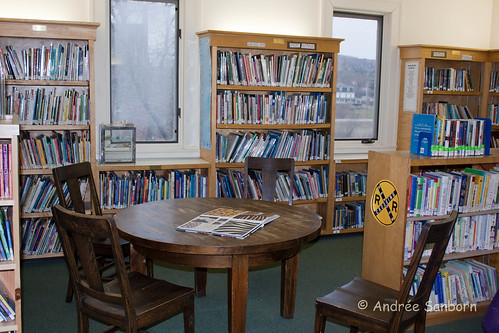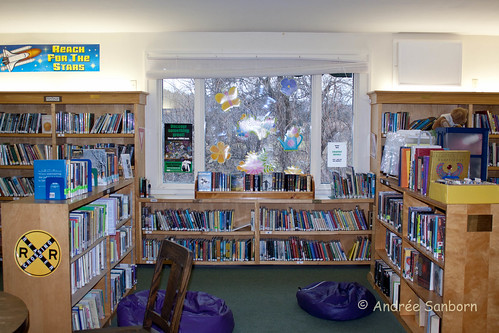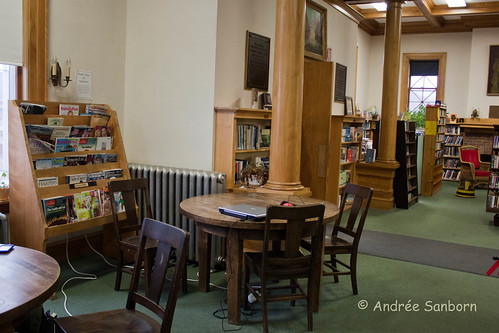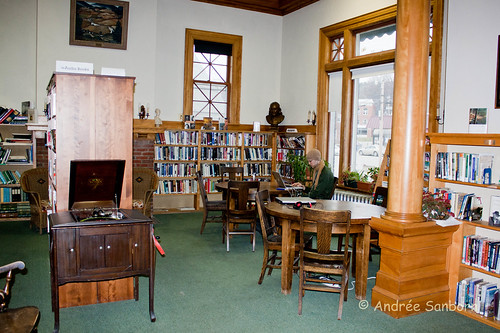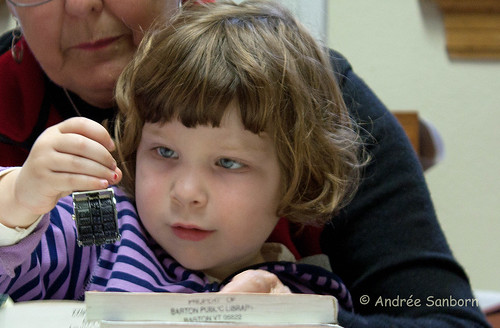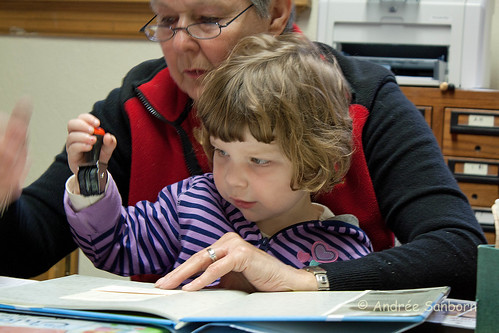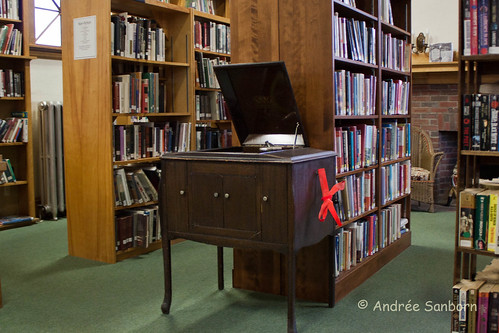
Victrola Model 240, manufactured in 1922
Toni, our library director, recently brought her Victrola to the library. This is an authentic Victor Victrola built in 1922. Toni will play the Benny Goodman Sextet record for you if you ask. It's a lovely record and it is fascinating to listen to the historic music.
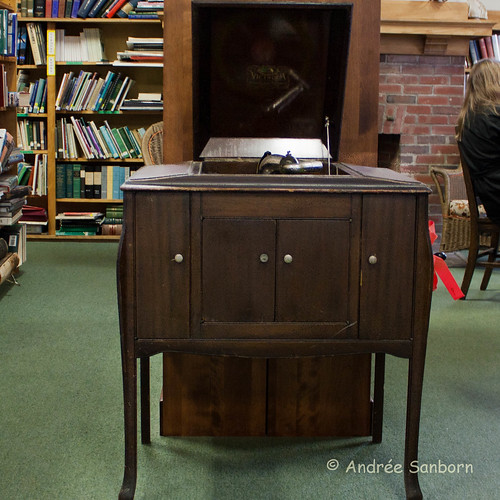
This model had small doors (seen here) until late in 1922
Using the serial number inside the Victrola and The Victor-Victrola Page web site, we read the following information about this machine:
The VV-240 was the lowest priced "hump-back" console model Victrola. This design, with the "trademark" Victrola domed lid opening, never really caught-on with the public as did the flat top console machines, and relatively low production volumes were indicative of this problem. Regardless of the lower production, most low-priced console models (including the 240) are shunned by collectors today. All 240's had the semi-automatic brake and a two-spring motor. VV-240's were available in mahogany, oak or walnut finishes, although mahogany was the most common choice. The 240 went through 3 basic design iterations: the earliest 1922 versions had a relatively small horn opening and small center doors (left), which were enlarged late in the year (right). In late 1923, the cabinet grew slightly larger and a much shallower lid was used. Some factory records indicate that a few VE-240's (electric) were produced, although this information may not be accurate. The 240 was discontinued in late 1925.
The original 1922 selling price of the VV-240 was $115.00. An estimated total of 66,152 Victrola 240's were produced.
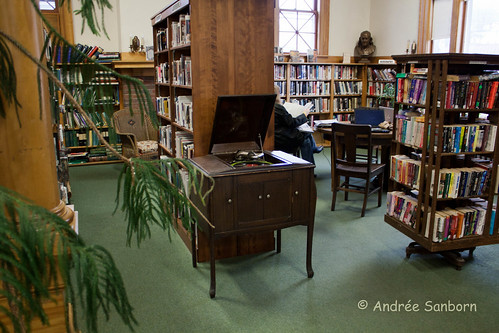
Most Model 240 Victrolas had mahogany cabinets.
Some more interesting facts from the Victor-Victrola Page:
- The Victor Talking Machine Company was founded in 1901. It was sold to RCA in 1929, right before The Depression hit.
- The Victor Dog's Name is Nipper. He is a mixed breed Terrier. One story states that he was originally painted sitting on his master's coffin, listening to his voice played back on a phonograph. That is an "urban legend". It was simply a creative idea.
- Victor was the world's largest producer of musical instruments for many years, and employed over 8,000 people during its heyday. Victor's main plant was in Camden, New Jersey, but they also had plants in California, Virginia, Canada and Japan.

Benny Goodman's Sextet: "I Found A New Penny" (Fox Trot)
- The vast majority of Victrolas were sold in the months of November and December. They were great Christmas presents and the factory worked frantic overtime during those months.
- Victors were sent from the factory to wholesale distributors, and from there to dealers. Consequently, there was a lot of mark-up in the retail pricing.
- Deluxe (fancy) Victrolas were commonly gutted and used as bookcases or bars in the 1930's and 40's. The spring motors were used as trolling motors for fishermen. One company in New York would buy them for 50 cents and grind them up for use as recycled fiberboard during World War II.
- When introduced in 1911, the price-leader Victrola VV-IV made the phonograph affordable to many Americans. However, it's $15.00 price tag would equate to $275.00 in today's economy. Just about the same as a deluxe IPOD.
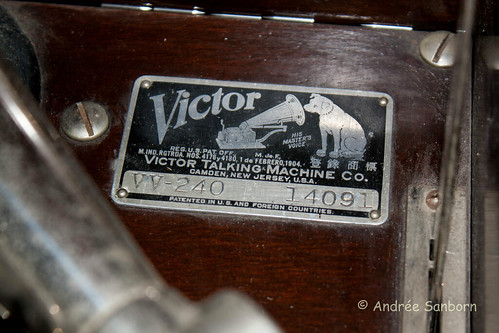
66,152 Model 240 Victrolas were manufactured and sold for $115.00
- There were all kinds of special needles produced for Victrolas made of cactus, fiber, tungsten, etc. These are no longer produced. Steel needles are still readily available from a number of sources.
- Approximately 800,000 external horn Victors, and over 7 million Victrolas (internal horn) came off the assembly lines by the time RCA bought the company.
- Some external horn Victor tabletop phonographs used solid wood cabinets. All Victrolas use a composite wood core and thin veneer for the cabinets
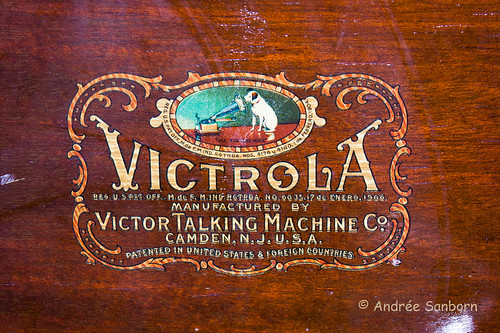
"The Victor Dog's Name is Nipper. He is a mixed breed Terrier."
Next time you come by the library, ask Toni if you can listen to the recording. We hope you have found this history of Toni's Victrola as interesting as we have!

